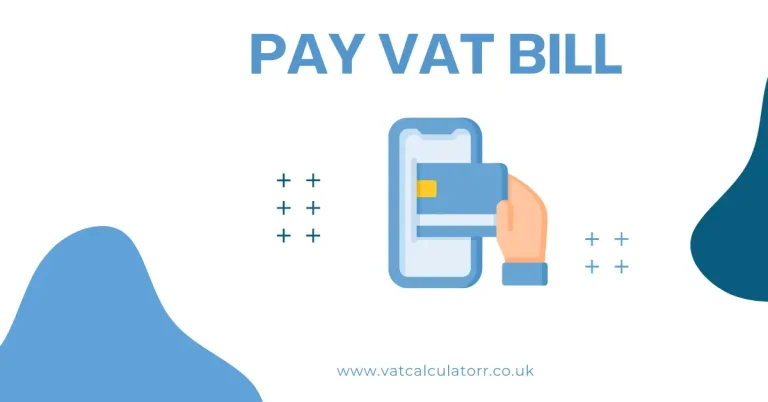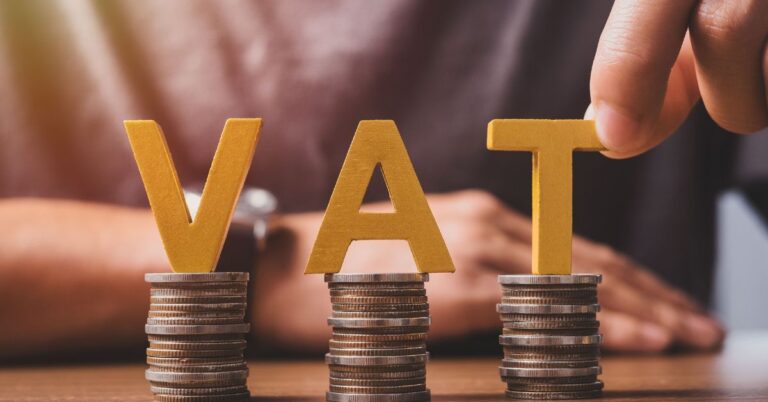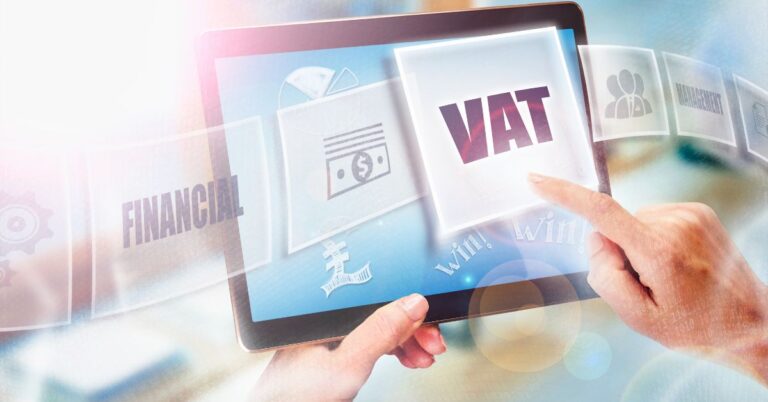How do I Get a VAT Number in the UK?
You get a VAT number by registering online through HMRC when your business turnover exceeds £90,000 in 12 months. The process takes 4-6 weeks and costs nothing. You need business documents like your UTR number and bank details.
What is a UK VAT Number?
A UK VAT number is a 9-digit identifier that HMRC assigns to VAT-registered businesses. The format is GB followed by 9 numbers, like GB123456789. This number differs from your Company Registration Number or UTR number.
VAT numbers serve 4 main purposes:
- Charging VAT on sales
- Reclaiming VAT on business purchases
Your VAT number appears on all invoices and official documents. Customers need this number to reclaim VAT on their purchases from you.
Why Do Businesses Need VAT Registration?
VAT registration lets businesses collect and reclaim Value Added Tax on transactions. VAT is a 20% tax on most goods and services in the UK. Registered businesses collect this tax from customers and pay it to HMRC quarterly.
Many companies prefer VAT-registered suppliers because they can reclaim the VAT they pay. This makes your business more attractive to B2B customers.
Who Must Register for VAT?
Businesses must register for VAT when their taxable turnover exceeds £90,000 in any 12-month period. This threshold increased from £85,000 in April 2024. You must also register if you expect to exceed £90,000 in the next 30 days.
Mandatory Registration Triggers
You must register for VAT if:
- Your 12-month turnover exceeds £90,000
- You expect to exceed £90,000 within 30 days
The £90,000 threshold is the highest in the OECD according to government data. This keeps most small businesses out of the VAT system.
Voluntary Registration Options
You can register for VAT voluntarily even with turnover below £90,000. This helps businesses that buy many VAT-rated items or sell mainly to other VAT-registered companies.
Voluntary registration benefits include:
- Reclaiming VAT on business purchases
- Looking more professional to customers
When Should You Register for VAT?
You must register within 30 days of exceeding the £90,000 threshold. Late registration results in penalties based on the VAT amount you should have collected.
Registration Deadlines
HMRC requires registration within 30 days of:
- The month-end when turnover exceeded £90,000
- Realizing you will exceed £90,000 in 30 days
Missing deadlines triggers automatic penalties. HMRC calculates penalties based on the VAT amount owed and how late you register.
Track your rolling 12-month turnover monthly. Use accounting software or spreadsheets to monitor your total. Start registration when you approach £85,000 to avoid deadline pressure.
What Documents Do You Need for VAT Registration?
Limited companies need their Company Registration Number, UTR, and bank details for VAT registration. Sole traders need their National Insurance number and photo ID instead.
Documents for Limited Companies
Required documents include:
- Company Registration Number
- UTR (Unique Taxpayer Reference)
Additional information needed:
- Business bank account details
- Annual turnover figures
- Next 12 months’ turnover estimate
- Corporation Tax details
- PAYE information (if applicable)
Documents for Sole Traders
Required documents include:
- National Insurance number
- Photo ID (passport or driving licence)
Additional information needed:
- Bank account details
- UTR number (if available)
- Annual turnover figures
- Self Assessment details
- Recent payslips and P60
How Do You Register for VAT Online?
You register for VAT online through GOV.UK using your Government Gateway account. The process takes 30-60 minutes if you have all required documents ready.
Step-by-Step Registration Process
Step 1: Create Government Gateway Account Visit GOV.UK and create your Government Gateway ID and password. You can do this during the VAT registration process.
Step 2: Access VAT Registration Search “register for VAT” on GOV.UK. Click the official HMRC registration page and select “Register online”.
Step 3: Complete Application Fill in your business details, turnover figures, and contact information. Double-check all information before submitting.
Step 4: Submit Application Review your application and submit it to HMRC. You cannot easily change details after submission.
What Happens After You Apply?
HMRC reviews your application and sends your VAT number by post within 4-6 weeks. You receive a VAT certificate with your 9-digit number and effective registration date.
HMRC automatically sets up your Making Tax Digital account. You must use MTD-compatible software for VAT returns and record-keeping.
Can You Register for VAT by Post?
You must register by post using form VAT1 for certain business types. This includes businesses applying for registration exceptions or joining special schemes.
Post registration is required for:
- Agricultural Flat Rate Scheme applications
- Registration exception requests
Most standard business registrations can be completed online, which is faster and more convenient.
How Long Does VAT Registration Take?
VAT registration takes 4-6 weeks from when HMRC receives your complete application. Processing time can extend if HMRC needs additional information or if you submit incomplete applications.
Factors Affecting Processing Time
Complete applications process faster than incomplete ones. HMRC prioritizes applications with:
- All required documents included
- Accurate business information provided
Common delays include:
- Missing information
- Unclear business activities
- Complex ownership structures
- International business elements
Trading While Awaiting Registration
You can trade while waiting for your VAT number but cannot charge VAT until you receive it. You can increase prices to account for future VAT obligations.
For example, if you agree to a £10,000 contract and register for VAT, charge £12,000 total (£10,000 plus £2,000 for 20% VAT). Reissue the invoice with VAT breakdown once you receive your number.
What Are the Costs of VAT Registration?
VAT registration with HMRC is free. You pay no government fees to get your VAT number or maintain your registration.
Professional Service Costs
Optional professional services cost:
- £35-£50 for basic online services
- £100-£300 for accountant services
Ongoing VAT Costs
After registration, you need:
- MTD-compatible accounting software
- Time for quarterly VAT returns
Software costs range from £10-£50 monthly depending on features needed.
What is Making Tax Digital for VAT?
Making Tax Digital (MTD) requires VAT-registered businesses to keep digital records and submit returns using compatible software. All VAT-registered businesses must use MTD regardless of turnover.
MTD Software Requirements
Your software must:
- Record VAT transactions digitally
- Submit returns directly to HMRC
Popular MTD software includes QuickBooks, Xero, Sage, and FreeAgent. Most are cloud-based and work on computers, tablets, and phones.
MTD Exemptions
You can get MTD exemption if digital tools are not reasonably practical for your business. Exemptions apply for:
- Age, disability, or remote location issues
- Businesses in insolvency procedures
How Do You Use Your VAT Number?
You must include your VAT number on all VAT invoices and business documents. Your VAT invoices must show the VAT rate, amount, and your registration number.
VAT Invoice Requirements
VAT invoices must include:
- Your VAT registration number
- VAT amount charged
Other required details include business names, addresses, invoice dates, and item descriptions.
VAT Return Deadlines
You must submit VAT returns within 1 month and 7 days after your VAT period ends. Most businesses submit quarterly returns, but some file monthly.
Payment deadlines match return deadlines. Use online payment or Direct Debit to avoid late payment penalties.
What Mistakes Should You Avoid?
Common VAT registration mistakes include providing incorrect turnover figures and missing registration deadlines. These errors cause delays and potential penalties.
Application Mistakes
Frequent errors include:
- Wrong turnover calculations
- Incomplete business details
Post-Registration Mistakes
After registration, avoid:
- Forgetting to charge VAT on sales
- Missing VAT return deadlines
How Do You Get Help with VAT Registration?
HMRC provides free VAT registration help through their helpline at 0300 200 3700. They also offer online guidance and webinars.
Professional Support
Consider professional help if you have:
- Complex business structures
- International business elements
Tax advisors can help minimize VAT liabilities and set up efficient systems.
What is VAT Deregistration?
You can cancel VAT registration when your turnover falls below £88,000 for 12 months. Apply online or use form VAT7 to deregister.
When to Deregister
Deregister when you:
- Stop making taxable supplies
- Fall below the £88,000 threshold
You must account for VAT on remaining stock and assets when deregistering.
How Do You Calculate VAT?
To add 20% VAT to a price, multiply by 1.20. To remove VAT from a price including VAT, divide by 1.20.
VAT Calculation Examples
Adding VAT: £100 × 1.20 = £120 Removing VAT: £120 ÷ 1.20 = £100
Use VAT calculators for accurate calculations and pricing decisions.
Final Thoughts
Getting a VAT number requires online registration through HMRC when your turnover exceeds £90,000. The process is free and takes 4-6 weeks with proper documentation.
Register within 30 days of exceeding the threshold to avoid penalties. Prepare by gathering required documents and choosing MTD-compatible software. For help with VAT calculations, visit our VAT rate guide and registration information.
Start monitoring your turnover now if you approach £85,000. Early preparation helps avoid last-minute registration pressure and sets up proper systems for VAT compliance.





